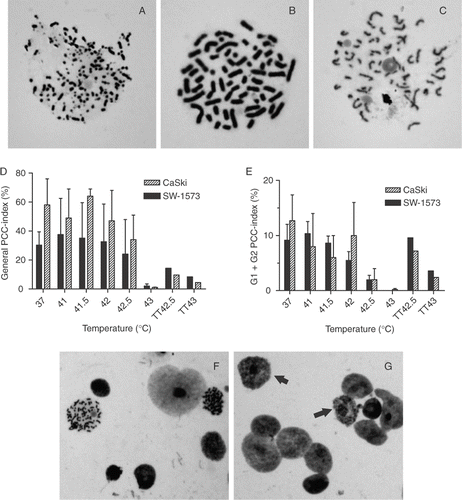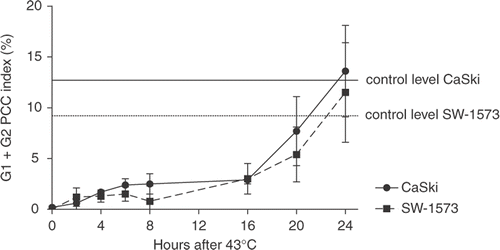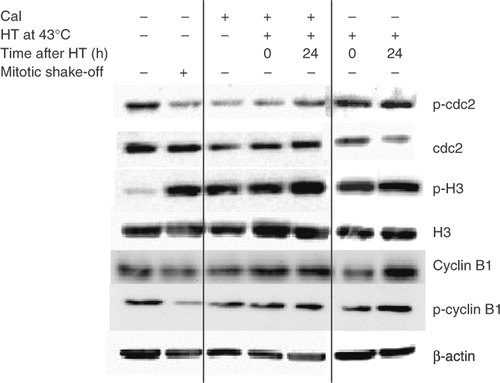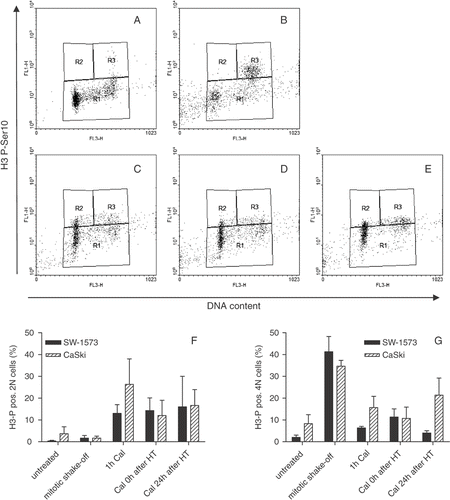Figures & data
Figure 1. (A–C) Typical examples of S-phase (A), G2-phase (B) and G1-phase (C) PCC in SW-1573 cells. Magnification: 1,000 x. (D) Total PCC induction, and (E) induction of PCC in G1 and G2 phase cells by Cal in cells immediately after hyperthermia treatment at various temperatures for 1 h and in thermotolerant (TT) cells treated at the indicated temperature. Means with standard errors of three independent experiments. (F–G) Representative examples of SW-1573 nuclei after incubation of cells with Cal for 1 h to induce PCC. (F) untreated cells: two G2 phase PCC spreads and 6 non-condensed nuclei are visible, and (G) cells treated with 43°C hyperthermia (1 h), arrows: condensation of nuclei not resulting in chromosomal spreads. Magnification: 200 x.

Figure 2. Induction of PCC in G1 and G2 phase cells after recovery at 37°C for various time periods after 43°C hyperthermia treatment. Means with standard errors of three independent experiments.

Figure 3. Representative example of two separate experiments of western blot analysis of the effect of treatment with Cal and/or HT at 43°C on Cdc2-PTyr15, total Cdc2, H3-PSer10, total H3, p-cyclin B1, total cyclin B1 and β-Actin in SW-1573 cells.

Figure 4. Phosphorylation of H3-PSer10 is not associated with Cal induced PCC inhibition by 1 h hyperthermia treatment at 43°C. Representative examples of three independent experiments are shown for CaSki cells (A–E) y-axis: H3-PSer10fluorescence, x-axis: DNA content propidium iodide fluorescence; (A) Untreated, (B) mitotic shake-off cell suspension, (C) 1 h Cal, (D) Cal 0 h after HT at 43°C, (E) Cal 24 h after HT at 43°C. Regions are defined as H3-PSer10 negative (R1), H3-PSer10 positive 2N (R2) and H3-PSer10 positive 4N (R3). Quantification of H3-PSer10 positive 2N (F) and 4N (G) CaSki and SW-1573 cells.

